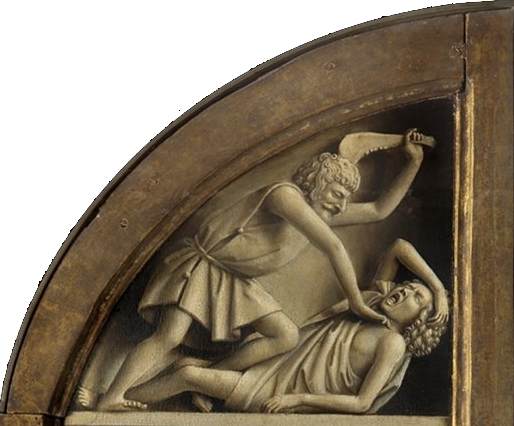Description
The painting The Ghent Altarpiece: The Killing of Abel is a masterpiece by the Flemish artist Jan Van Eyck. The piece is part of a set of panels that make up the altarpiece of the Cathedral of Saint Bavo in Ghent, Belgium. This work of art is one of the most important of the Nordic Renaissance and stands out for its impressive technique, composition and symbolism.
The painting depicts the biblical story of Abel's death at the hands of his brother Cain. In the work, Cain can be seen making a violent gesture while holding an agricultural tool, while Abel lies on the ground, wounded and bloody. The composition of the painting is impressive, with an in-depth perspective that allows the viewer to immerse themselves in the scene. In addition, Van Eyck uses the chiaroscuro technique to create an effect of light and shadow that adds even more drama to the scene.
Color is also a prominent aspect of the work. Van Eyck uses a rich and vibrant color palette, with shades of gold, red and green contrasting against the dark background. The oil painting technique allows the artist to create a unique texture and lightness, making the work appear almost three-dimensional.
The history of the painting is also interesting. It was commissioned by the wealthy Flemish merchant Joost Vijdt in the 15th century, and Van Eyck is believed to have worked on it with his brother Hubert. The work was stolen several times throughout its history, and in World War II it was hidden by the Nazis in a German salt mine. After the war, it was recovered and returned to its original place in the Ghent Cathedral.
As for little-known aspects, it is believed that Van Eyck used his own image as a model to represent Cain in the painting. Additionally, some scholars have suggested that the work contains occult symbolism related to heresy and religious reformation that took place at the time it was created.
In short, The Ghent Altarpiece: The Killing of Abel is an impressive work of art that stands out for its technique, composition, and symbolism. It is a key piece of the Nordic Renaissance and one of the most important in the history of art.

